In Icelandic soils, accumulation of soil organic carbon is aided by high soil iron concentrations, which arise from the volcanic origin of Iceland’s soils and high rates of aeolian deposition of poorly-weathered, iron-rich volcanic dust. The aim of this project is to understand the coupled fates of iron and carbon in Icelandic wetland soils; environments which experience fluctuations in the water table and thus changing redox conditions. Funded by the SPI, Dr. Laurel ThomasArrigo and two ETH Environmental Sciences MSc students (Tabea Nydegger and Sophie Vontobel) spent four weeks in Iceland, collecting soil and porewater samples and conducting an in-situ field experiment.
Seeking Iceland’s iron-rich wetlands
On July 25, 2020 we arrived at our accommodation in Hvanneyri, Iceland; a small agricultural village 80 km north of Reykjavik and home to our collaborator’s institute, the Agricultural University of Iceland. After settling into our home-away-from-home for the next month, our first task was to select potential sites for our planned field experiments and sampling. This work consisted of walking a lot of kilometers to explore wetlands and take exploratory soil cores and porewater samples. With warm, sunny weather, our spirits were high! We were looking for organic soils with high iron concentrations in the soil and in the porewater, and wow, did we find some impressive evidence of iron!
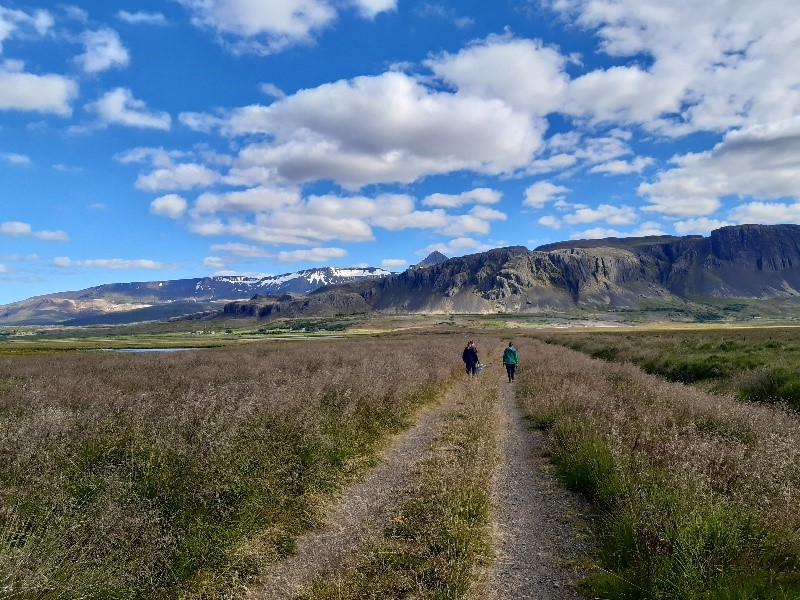
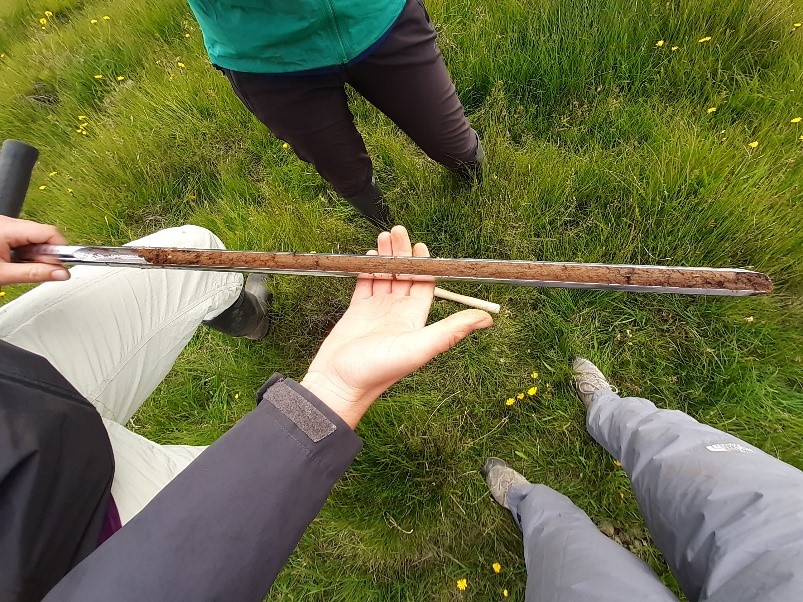
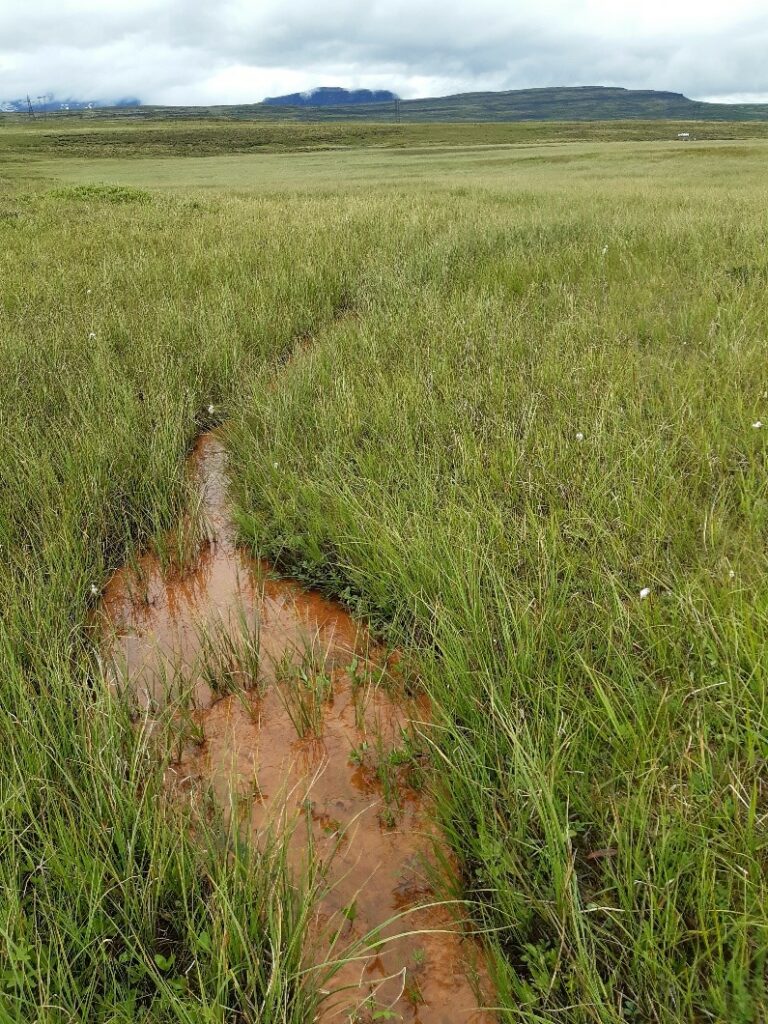
Preserving iron speciation in the field
As soon as we selected our field sites for our in-situ experiment, the weather turned colder. Wind, light rain, and cooler temperatures more typical of Iceland prevailed for the remainder of our trip. Still, we were excited to begin our experiments and to start collecting samples. We quickly found that there was so much dissolved iron in the filtered porewater samples that iron oxidized and formed orange precipitates almost immediately in our syringes upon exposure to oxygen! That the syringe precipitates resemble the orange iron precipitates in the wetland is interesting, however this was not what we wanted to study! In order to preserve iron speciation in our filtered porewater samples, we pre-acidified our syringes.
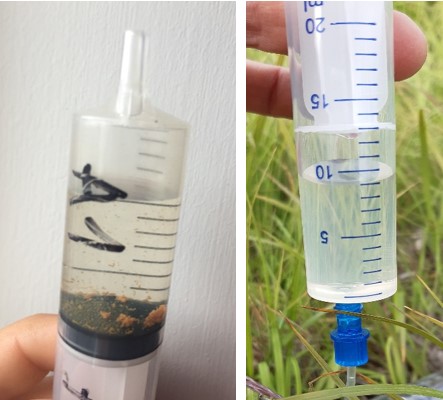
Soil core collection posed equal challenges. The wet or moist organic soils tended to compact easily in our 50 cm long, 50 mm diameter soil corer, often resulting in only partially filled soil cores. With time, our technique and success rate improved, but it was still exciting to collect a complete 50 cm deep soil core!
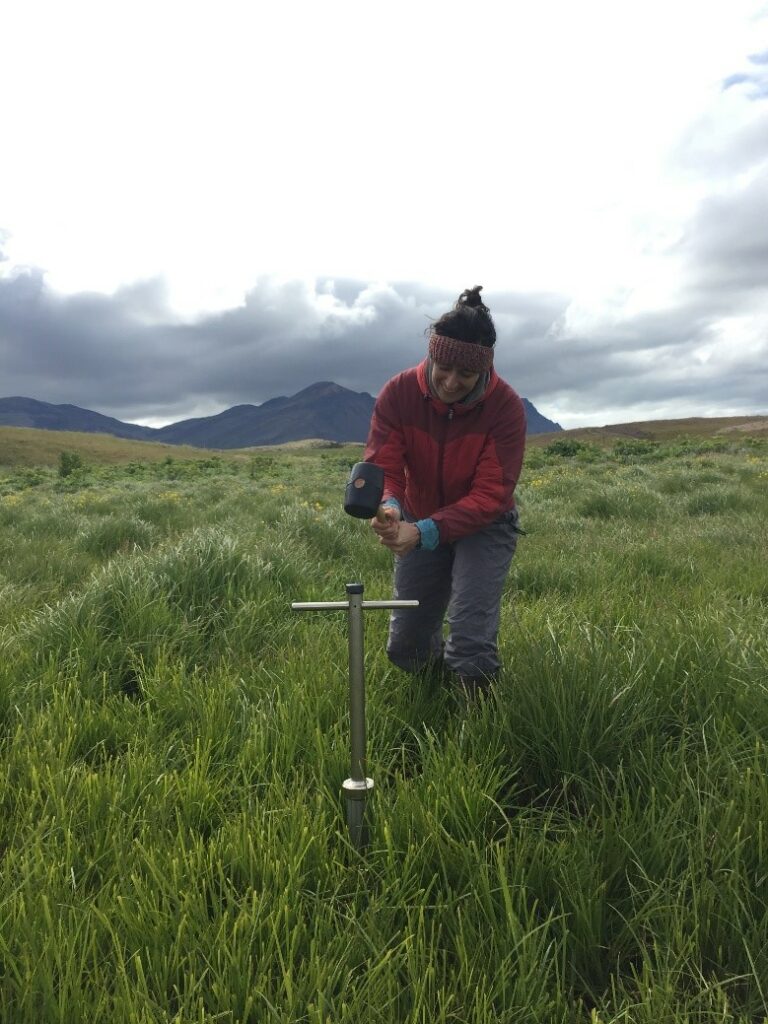
© Sophie Vontobel
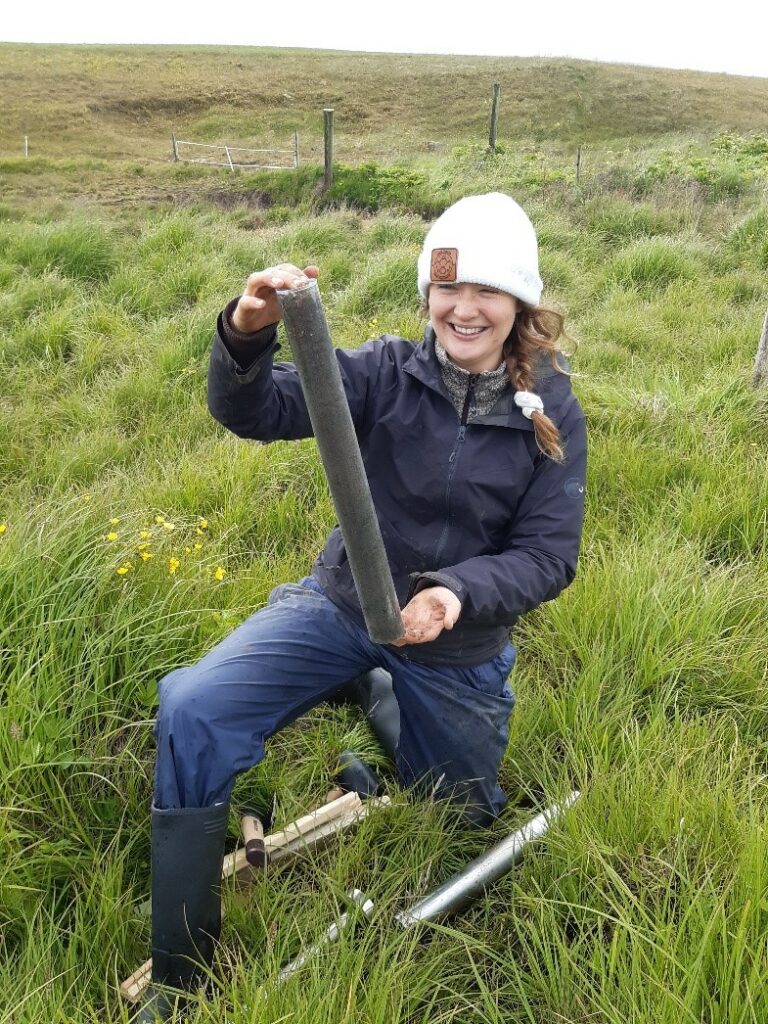
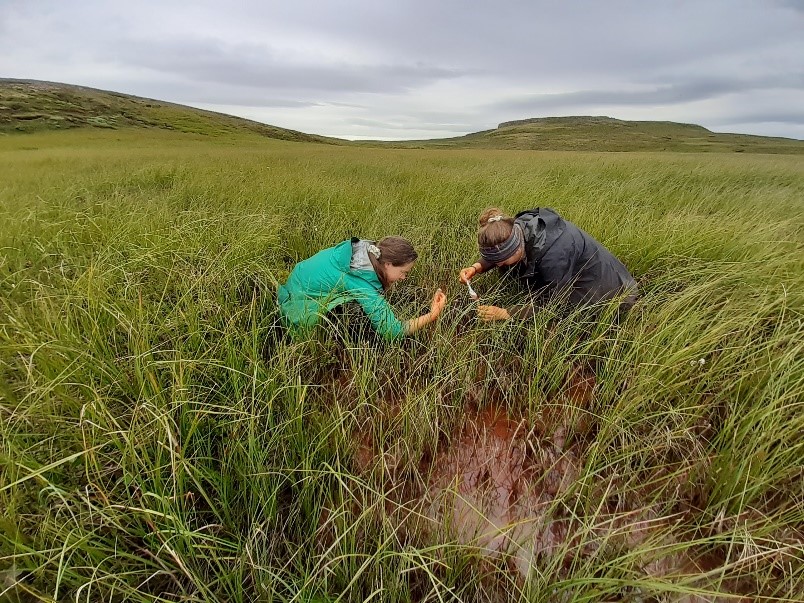
The research continues…
We have since said good-bye to our home in Iceland and have returned to Zurich with an incredible amount of soil and porewater samples to analyze. Overall, our trip was a fantastic success, producing field experiment samples for both MSc thesis projects and additional soils for ongoing lab-based experiments. The results from this research will hopefully shed light on the complex dynamics influencing iron and carbon cycling in Iceland wetland soils. We are grateful for the support of the SPI in realizing this project.
Laurel ThomasArrigo is a researcher at ETH Zurich. This field note relates to her field trip in Iceland in August 2020 funded by a Polar Access Fund grant.
Header photograph: Laurel ThomasArrigo
© All rights reserved, Laurel ThomasArrigo 2024